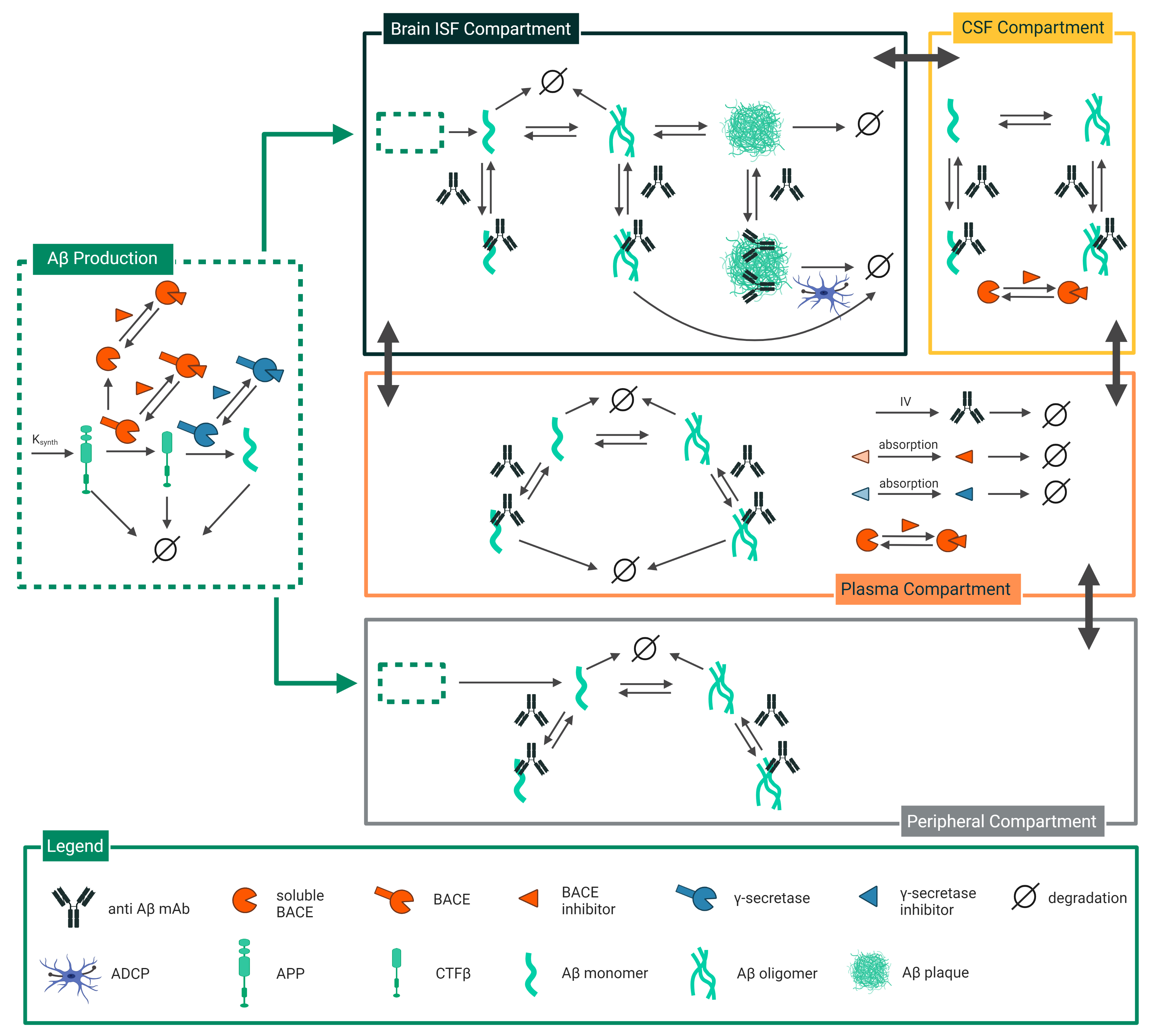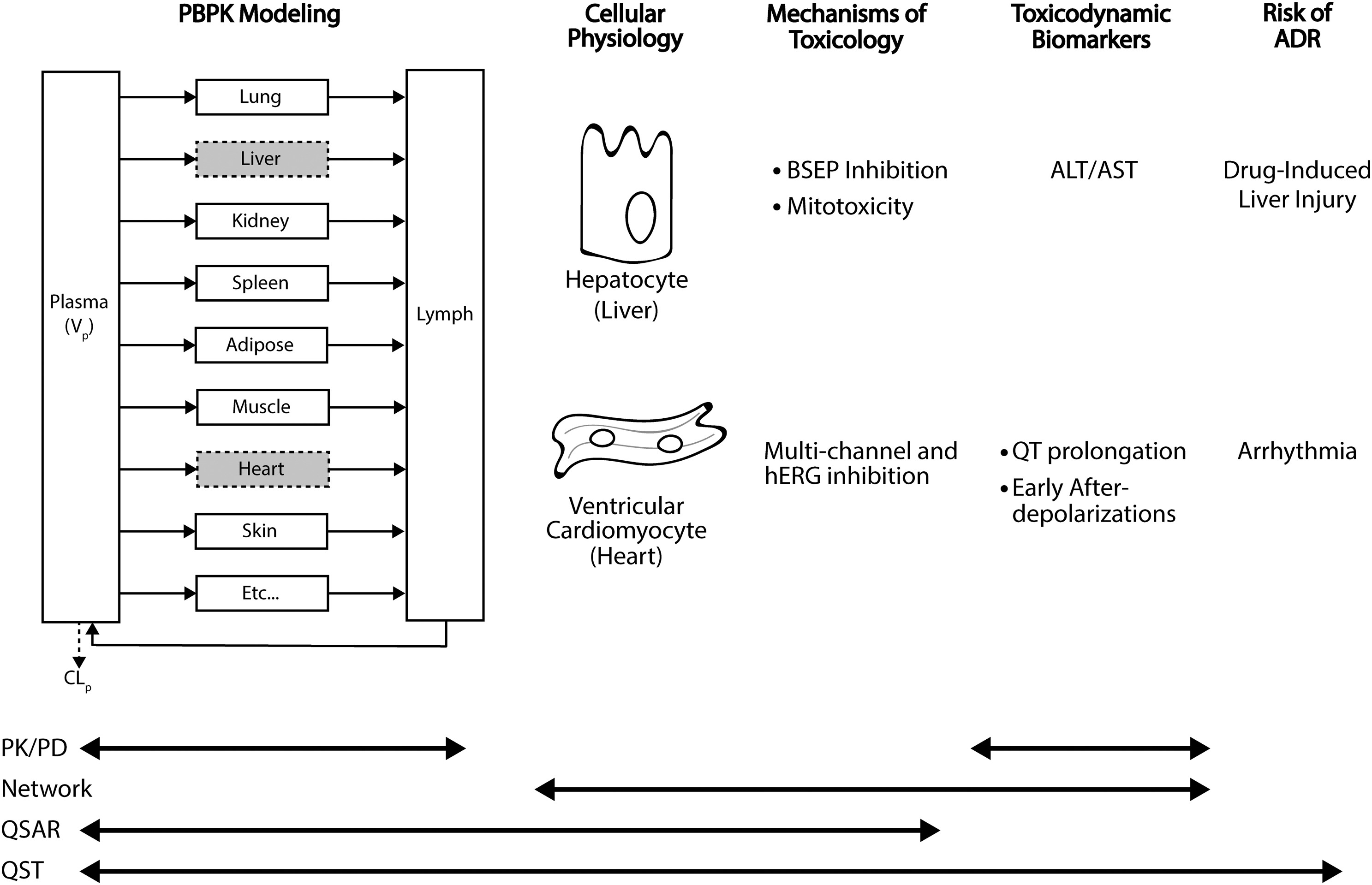Quantitative Systems Pharmacology
What is Quantitative Systems Pharmacology?
Quantitative systems pharmacology (QSP) models are the combination of systems biology and pharmacology. Models are built on the principle that the effect of a therapeutic may not be the result of one specific interaction, but rather a network of interactions. In doing so, QSP bridges the gap between biology and pharmacology to arrive at a quantitative math model that characterizes the therapeutic pharmacology in the context of a complex biological system, disease processes and therapeutic mechanism of action (MOA).
QSP models are often built as a platform model for a disease, a pathway, or a modality. In addition to incorporating biological understanding of the disease or the pathway, QSP models can incorporate data from a range of drugs, multiple studies, and an array of different types of data (clinical PK, biomarker, efficacy data, preclinical data, in vitro data, etc).

What is Quantitative Systems Toxicology?
Quantitative Systems Toxicology (QST) models focus on understanding the toxicological effect (i.e. adverse drug reaction) of therapeutics instead of pharmacology. Similar to QSP, it uses systems biology to gain a quantitative understanding of how drugs modulate cellular systems at the molecular level, and how therapeutic/toxic effects integrate across multiple layers of biological complexity to impact human pathophysiology.

When to use QSP/QST Modeling
QSP/QST models are ideal for exploring drug’s effect on disease, investigating the exposure-response relationship for many therapeutics in a single model, predicting combination effects, and species translation. QSP/QST models can be applied throughout the R&D spectrum and provide competitive advantages, as they help to generate and test hypotheses from complex systems that are hard to isolate experimentally. This modeling approach is typically more complex and resource intensive, but can answer a greater breadth of questions. Therefore early planning of the modeling activities before the expected timeline to provide an answer is important.
Example questions addressed by QSP/QST models:
- Target prioritization
- Comparison of efficacy or toxicity of potential targets in a disease-associated pathway
- Identification of rational drug combinations
- Comparison of drugs with different mechanisms of action
- A priori prediction of exposure-response for a novel therapeutic or a new patient population
- Understand the relationships among multiple biomarkers and efficacy
- Patient population selection
- Identify biomarkers for response or toxicity
QSP Model Example
Challenge: Alzheimer’s disease (AD) is an irreversible, progressive brain disorder that destroys memory and cognitive function. There are currently no FDA approved disease-modifying treatments, and the reasons for the high failure rate of clinical trials in this area (99.6%: Cummings et al. 2014) are not well understood. Incomplete understanding of disease molecular mechanisms, the timing of treatment, insufficient drug exposure to and lack of brain penetration have shown to be the contributing factor.
Solution: A QSP model was developed describing the molecular mechanisms of plaque formation in AD as well as the mechanism-of-action for four anti-Aβ drugs, two b-site amyloid precursor protein cleaving enzyme (BACE) inhibitor drugs, and one g-secretase inhibitor.